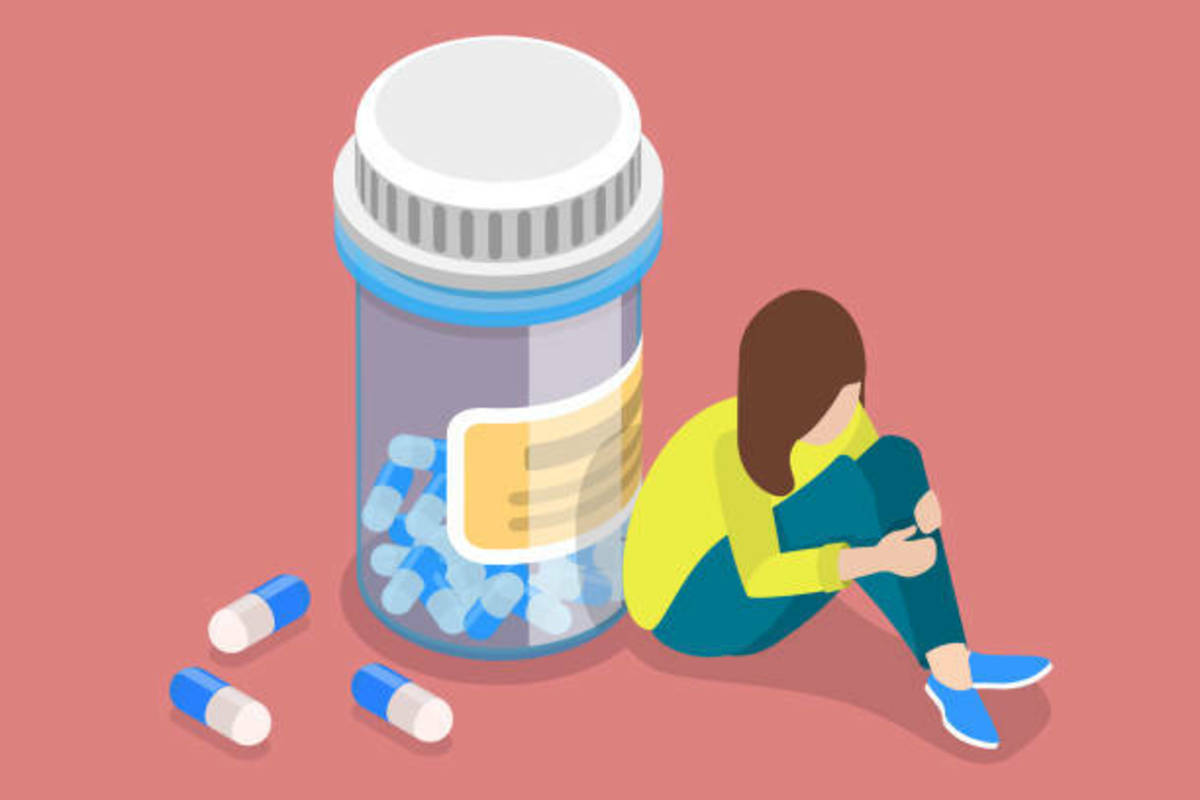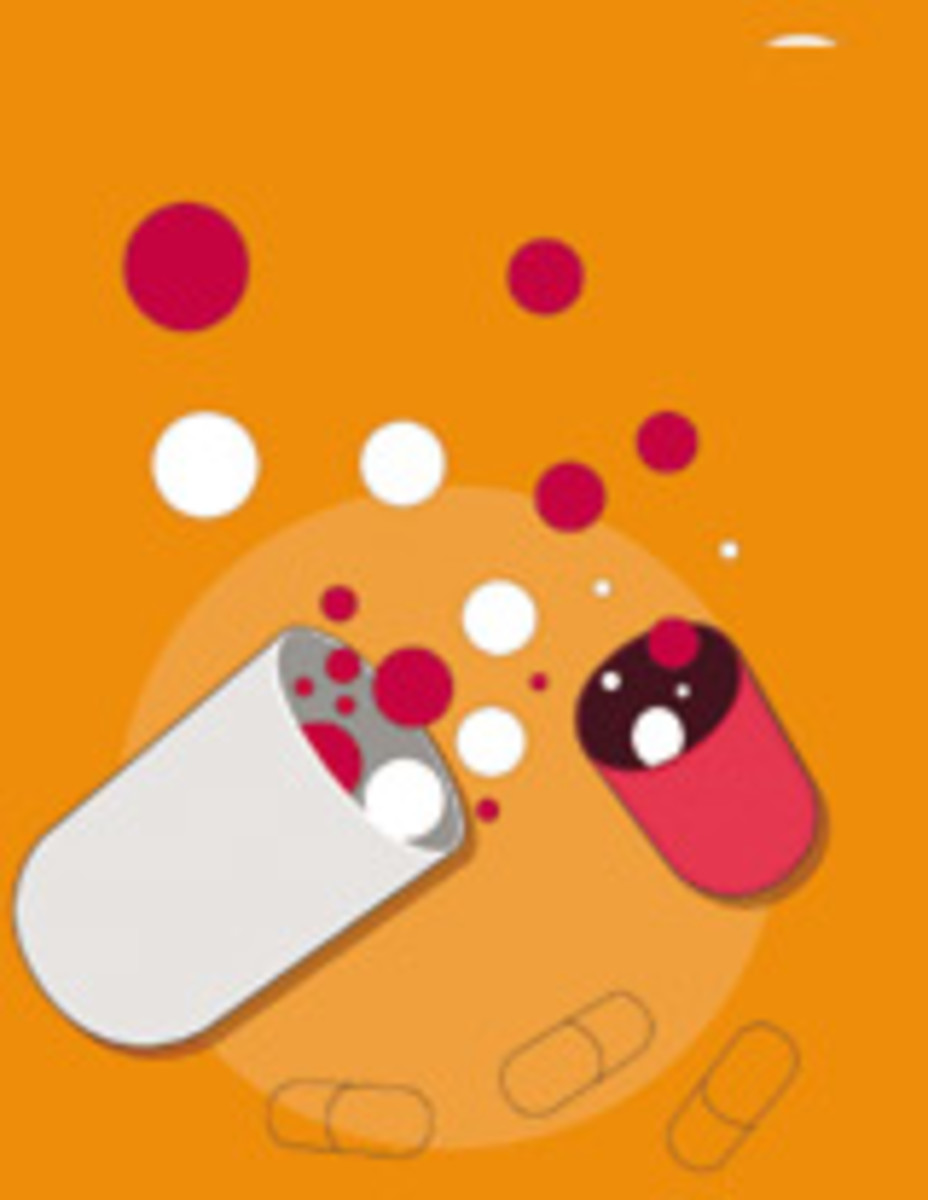Effects of Drugs on Your Unborn Child... Spread the Word

Introduction:
Drug effected infants a heartrending and preventable problem. When women are pregnant and do drugs the effects from these drugs are not only on them but on their unborn child. The fetus receives nutrients, oxygen and drugs. It has detrimental effects not only on the infant but the family, not just when the child is born either but in some cases it can have lifelong lasting effects. It is even sadder that it can be prevented. How can women allow this to happen? It does happen and being equipped as a teacher, care giver or parent is what you need to do. The main question to look at is; How drugs affect the newborn child, and the different effects of the different drugs?, What is the outcome/characteristics on the baby?, What techniques can be used to care for the child, the percent of children born with signs of prenatal drug use?, and the profiles of the women giving birth to these infants.
This is a very upsetting topic. The only way it is going to stop is for women to be educated about proper prenatal care, to give your child the right to a healthy start. I have seen the effects of drugs and unhealthy homes on children and it happens all too often.
Review of Literature:
It is critical for the health of your child to have proper prenatal care for yourself and your unborn child. Many things can go wrong during pregnancy. Still women put their child in direct harm by using drugs while pregnant. Each drug has its own harmful effect. The drug can have short term and long term effects. It affects women from different backgrounds at higher percentages. When a child is born with a disability, from a mother’s drug use the child will need special attention immediately and in the future. It can have lifelong consequence.
Drugs include what is known as illicit drugs such as marijuana, cocaine and crack, hallucinogens, inhalants, and other non-medical prescriptions (SAMHSA, 2007). According to the Maternal Lifestyle Study one-million-two-hundred and three thousand pregnancies involved cigarette use, eight-hundred and twenty-three thousand involved alcohol, and two-hundred and two-thousand involved illicit drugs (Messinger,D, Bauer, D, et. al...,2004). Numbers that may not seem that overwhelming but it adds up to two-million-two-hundred-twenty-eight-thousand children born out of two-hundred –eighty-one-million and fifty-seven- thousand (SheKnows, LLC, 04-07)born exposed to drugs.
While normally the fetus would be receiving nutrients needed to grow. Drug effected fetuses are getting the toxins from these destructive drugs. Children that have been exposed to drugs are developmentally behind their peers. Children who have been exposed to alcohol scored a 1.6 developmental index points lower than their non exposed peers. When exposed to the drug opiate, a drug used to treat pain, was used prenatally children scored 3.8 psychomotor development index points lower than their non exposed peers (Messinger, D, Bauer, D, et al..., 2004). Children exposed to drugs can be left with various problems. They include physical, mental, and behavioral problems, the child may be small, under weight, and even mentally disabled (Adoption Services, 2007). Other health conditions include small for gestational age (SGA), or below the third percentile for their gestational age, failure to thrive (FT) which is characterized by loss of weight, and failure to reach developmental milestones, some children exhibit neuro-behavioral symptoms which are withdrawal symptoms which can include tremors and irritability, and their skin may be red and dry they may have fever, sweating, diarrhea, vomiting, and even seizures. Other symptoms infants may have are infectious disease which most commonly known as STD’s, SIDS or sudden infant death syndrome has been associated with drug use and Fetal alcohol syndrome which can cause prenatal, and postnatal growth retardation, central nervous system abnormalities, and abnormalities to the child’s face. Children will often exhibit unpredictable sleeping patterns, feeding difficulties, irritability, atypical social interactions, delayed language and poor fine motor skills (Sisco, Jeanne, 1997).
Drug use prenatally does not just affect the child immediately but throughout his or her whole life in some cases. During preschool age or three to five years old may show symptoms of hyperactivity, short attention span, loss of control, mood swings and difficulty with transition. School aged children to teenagers present a risk of abuse, neglect, learning disabilities, and behavioral problems (Sisco, Jeanne, 1997).
In a study done with eighty women in December 1995 were enrolled into a test to see what early intervention program worked the best. The three different programs they tested where Project Strive, Early Infant Transition Center, and Home-based Nursing Intervention Program (HUGS). In the Project Strive eighty-five percent used poly drugs, seventy-seven percent were dependant on crack/ cocaine. Fifty-seven percent used alcohol and eighteen percent smoked cigarettes (Harolyn, M, Butz, A, et al…, 2005). Sixty-eight women out of eighty use cocaine or crack. Project Strive provided substance abuse treatment, social work intervention, parent education, home visits, infants/child developmental intervention, and community-based services. Although some mothers did not complete the program, the mothers that stuck with the program had considerably improved fetal growth (Harolyn, M, Butz, A, et al…, 2005). The Early Infant Transition Center focuses on social work intervention, parent education, home visits, and infant/ child developmental intervention, and community-based services. The program had 89 African American women and 11 White women. 82 of these women were single 5 married, 5 widowed, and 8 were divorced or separated. This program tested the newborns on many different scales. The newborns had heart murmurs, congenital syphilis and dermatitis; another infant had oral motor abnormalities. The nurses observed disturbed and undisturbed tremors, hyperactivity, and irritability. With the help of the program the infants grew at a higher rate expected compared to there exposed peers without the program (Harolyn, M, Butz, A, et al…, 2005). Home you go safely is a program that gives parent education, home visits, infant/child developmental intervention, and community-based services. Home based nursing was given, data was kept on the child’s growth, a child contact was promoted by the use of a Snugli (because of the difficulty of swaddling a drug affected child). The program showed better results of the infant’s side effects, but little effect on the stress of the child-parent relationship. By the age of three there was no data suggesting a difference between the children and the control group (Harolyn, M, Butz, A, et al…, 2005).
The word needs to get out there, these staggering high numbers of children that are not getting a chance of a normal life. Mothers to be need to be informed of the dangers their children are facing. In the year 2000, eighty-nine-percent of white women received early prenatal care, compared to seventy-four-percent of black and Hispanic women, and sixty-nine -percent of America/Indian. Age influences the likelihood that a woman is going to receive prenatal care. Women under the age of twenty are less likely to receive prenatal care compared to older childbearing mothers. An even more staggering number is approximately seventy-percent of white and Hispanic pregnancies were planned compared to less than half forty-nine percent of black women planned their pregnancies (National Crime Prevention Council, 2007). Part of the reason these numbers are so high is the availability of health care, women in low income communities may already have low academics and know little of child birth and the importance of prenatal care for their child.
As you can see there are a lot of children affected from drugs, each child has a different outcome from the different drugs, there are different techniques that you can use, and it affects minority groups.
Videotape Analysis:
How do drugs affect the newborn child, and the different effects of the different drugs? What is the outcome/characteristics on the baby?, What are techniques that can be used to care for the child, the percent of children born with signs of prenatal drug use?, and the profiles of the women giving birth to these infants. I was looking for these answers while I reviewed the two movies. I watched a movie entitled Mary’s Choice and Caring for Drug Affected Infants: the Cocaine Series. These movies answered all these questions for me except for percent of children born and the profiles of the women who gave birth to the drug affected infants.
The newborn that is affected with drugs has many unpredictable and predictable effects. Different drugs have different effect on the child. Alcohol can lead to Fetal Alcohol Syndrome. The leading cause of mental retardation is drinking during pregnancy, other side effects include hyper activity, low birth weight, heart, and kidney problems miscarriage and even worse still birth (Mary’s Choice). Smoking cigarettes can lead to under birth weight, a cut off of blood supply, food, and oxygen, also other health problems may develop later on in life (Mary’s Choice) like asthma. Maybe one of the worst drugs that an expecting Mother can do while pregnant is crack/ cocaine. Using cocaine during pregnancy can lead to many harsh health effects which include: heart, lung and other organ growth stunt, muscle stiffness, muscle tremors, and seizures. Feeding the infant can be difficult because of bad motor control which effects the sucking, and the child is not hungry from the drug. The child may be irritable, difficult to console, and many infants to not want to be handled, which effects the relationship with the caregiver. Many of times infants only sleep for an hour at a time and wake up frantically crying (Caring for drug affected infants). Many of times unfortunately it leads to a feeling of inadequacy of the care giver that turns into neglect and abuse to the child (Caring for drug affected infants). The child actually needs more attention and bonding then a healthy child.
Infants born affected with drugs need special care to aid in their development. The child first needs to be tested. The Brazelton Neonatal Behavioral Assessment is a scale that rates the child according to their interactions, their stress response, behavior, and motor skills. The lower the child scores the higher risk the child is placed in (Caring for drug affected infants). Standardized testing is also used that rates the child’s fine and gross motor skills, feeding, language, and the infants sleeping patterns. A program then can be established. It is best is intervention be started as early as within the first three days (Caring for drug affected infants). Many infants do not want to be touched, do not like bright lights, do not respond well to change and light, and loud noise. The child can become inconsolable. Some warning signs that a child may go into a frantic state include yawning, sneezing, hiccupping, physical distress, frowning, whimpering, and hyper extension. Depending on the child the care giver should become accustomed to these warning signs so that they can take proper measures (Caring for drug affected infants), which include dimming the lights playing soothing music, keeping the stimuli around child low and not moving or speaking to loudly (Caring for drug affected infants). Each day the care giver should work with the child. Some techniques that you would want to slowly introduce would be swaddling, rocking the child rhythmically, giving the infant a pacifier, and play soft music. Each technique should be introduced one at a time to prevent over stimulation (Caring for drug affected infants). To work on infants motor skills the care giver needs to help the infant find their midline which is difficult for a drug affected infant. Many infants “favor” one side of the body or switch, when the normally developing infant is symmetrically developing. There are techniques that a care giver can use such as laying infant on side and putting a blanket around back and between legs to help find midline, also playing with infant on their back and moving their arms and legs helps with joint movement(Caring for drug affected infants). To help infant develop sucking skills for feeding, gently rubbing the side of the infants mouth, or giving the infant a pacifier (Caring for drug affected infants). Each month the infant should be evaluated to prevent any undetected delays.
The care giver is going to need help it can not be done alone. There are classes, to let them know they are not alone. There are also respite programs that can take care of infant if a break is needed (Caring for drug affected infants).
It is important that infants be properly taking care of it is bad enough that these infants are born already with huge delays compared to other babies. It is our job as women and future teachers and mothers to provide other women with this information. This stress on children and families needs to be prevented, a stress that should and could be prevented.
Summary:
Drug use during pregnancy is asking for your child to have a disability. Children that are affected by drugs could eventually need special education either in pre-school, grade school, and even high school. One of the causes of mental retardation is from the exposures of toxins in the environment (Smith, D, 2007, p. 288). Fetal alcohol syndrome (caused by drinking alcohol during pregnancy) is linked to mental retardation. Over half of the children affected with FAS will require special education, and almost all will need special attention in school. They may also exhibit trouble paying attention, lecture style learning, and with self-control (Smith, D, 2007, p.288).
Infants affected by drugs are a concern that can be stopped. Women need to be informed of proper prenatal care. It is sad to think that these children are brought into this world with so many problems. In these cases it is either a situation of a mother that is not informed, or a mother is informed and does not get the proper care. It is a huge problem that needs to be addressed.
References
-Caring for Drug Affected Infants: The Cocaine Series. [video recording], (1991). Evanston, IL : Visions Video
-Harolyn, B, Butz, A, & Hoom, A Spectrum of Early intervention service. Infants and young children, 18, Retrieved September 28th, 2007.
-Mary’s Choice [video recording], (1993), Albany, NY, Kiko, INC.
-Messinger, D, Bauer, C, Das, A, Seifer, R, & Lester, B (2004). Pediatrics. The maternal lifestyle study: cognitive, motor, and behavioral outcomes of cocaine-exposed and opiate exposed infants through three years of age. 113, Retrieved September 28th, 2007,
-Milligan et al; licensee BioMed Central Ltd, (2002). Perceptions about prenatal care: views of urban vulnerable groups. BMC Public Health, 2, Retrieved October 17, 2007, from http://www.pubmedcentral.nih.gov/articlerender.fcgi?artid=137610
-National Crime Prevention Council, (2007). Retrieved October 18, 2007, from strategy prenatal care and drug abuse Web site: http://www.ncpc.org/topics/alcohol-tobacco-and-other-drugs/strategies/strategy-prenatal-care-and-drug-abuse-treatment-for-pregnant-women.
-SAMHSA, (2003). Retrieved October 21, 2007, from Illicit Drug Use - Tables 1.1 to 1.132 (Prevalence Estimates for 2003) Web site: http://www.oas.samhsa.gov/NHSDA/2k3tabs/LOTSect1pe.htm#PC
-SheKnows, (2003-2007). How many babies are born each year?. Retrieved October 21, 2007, fromhttp://pregnancyandbaby.com/pregnancy/baby/How-many-babies-are-born-each- year-88.htm.
-Sisco, Jeanne (1997, April). Children with prenatal drug and/or alchol exposure. Retrieved October 21, 2007, Web site: http://www.archrespite.org
-Women’s health USA, (2007). Retrieved October 21, 2007, from HEALTH STATUS - Reproductive Health Web site: http://mchb.hrsa.gov/whusa02/Page_54.htm
Evanston, IL : Visions Video, c1991.








